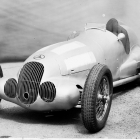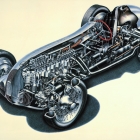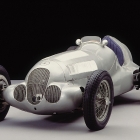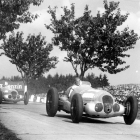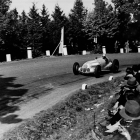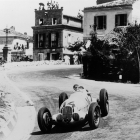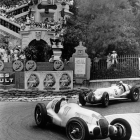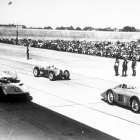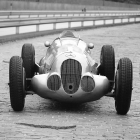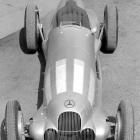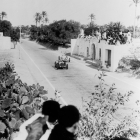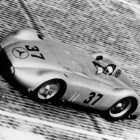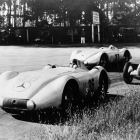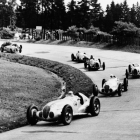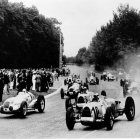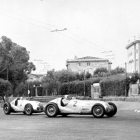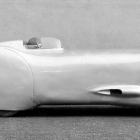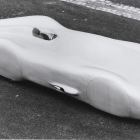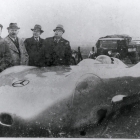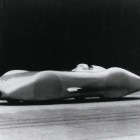
The legend that won 1937.
Mercedes-Benz has enjoyed a long history of racing success. In the late 1930s, the German automaker began to lose some ground to competitors such as Auto Union. That all changed with the introduction of the Mercedes-Benz W125 Grand Prix car that made its debut on May 9th, 1937 at the Tripoli Grand Prix, when Herman Lang drove the new car to victory.
The Mercedes-Benz W125 was a revolutionary race car that is regarded as the “ultimate race car of 1937.” The entire car was designed from scratch with much of the engineering coming from Rudolf Uhlenhaut, the Chief Engineer of the Mercedes-Benz Racing Team. The W125 utilized a rigid nickel-chrome molybdenum steel construction with four crossbars in an elliptical shape to improve torsional stiffness. Double wishbones and helical springs helped steer the front wheels while the rear used De-Dion double-jointed drive shaft, hydraulic lever-type shock absorbers, and longitudinal torsion bar springs.
Powering the Mercedes-Benz W125 was a 5,660 cc straight-eight that featured a new supercharger system. The inline-eight cylinder engine boasted two intake and outtake valves on each cylinder, and used two suction carburetors that mixed fuel and air before it was compressed by a Roots supercharger. The engine’s design and supercharger setup helped it to produce over 600 bhp, an incredible output for a racecar during the 1930s.
The Mercedes-Benz W125 weighed in at a mere 1,647.8 lbs. (749 kg.) without the driver, fuel, and tires, and measured 1.75 meters high, 1.2 meters high, and 4.2 meters long. 1937 was the last year of the 750 kg formula season and limited the competition of the car to just one year. This low weight and high-performance engine helped it capture numerous Grand Prix victories including the Grand Prix of Germany, Switzerland, and Monaco with Rudolf Caracciola and Manfred von Brauchitsch. Two lightweight W125 variants were also built to compete in hillclimb events and continued racing into the 1938 and 1939 seasons.
Mercedes-Benz also created a W125 racecar with aerodynamically optimized body work and 736 bhp V-12 engine to reach incredibly high speeds. The car, piloted by Rudolf Caracciola, was able to achieve a 432.7 km/h (268.87 mph) top speed in one kilometer and 432.4 km/h (268.68 mph) speed in one mile from a flying start, setting a new world record for the fastest recorded speed on a public road.
Although the Mercedes-Benz W125 race car only competed in Grand Prix racing for the 1937 season, it was an important step towards advancing technology for road and race cars in future Mercedes-Benz models.
Mercedes-Benz W125 Race Car Gallery
[Source: Mercedes-Benz]
Was the Mercedes-Benz W125 an iconic race car in the German automaker’s history? Leave a comment and let us know!

